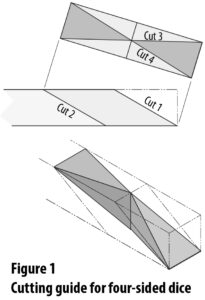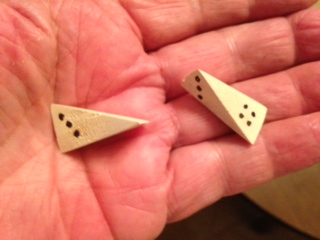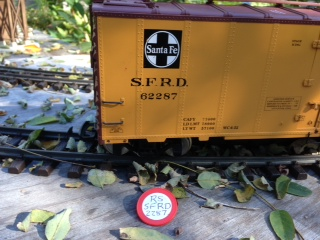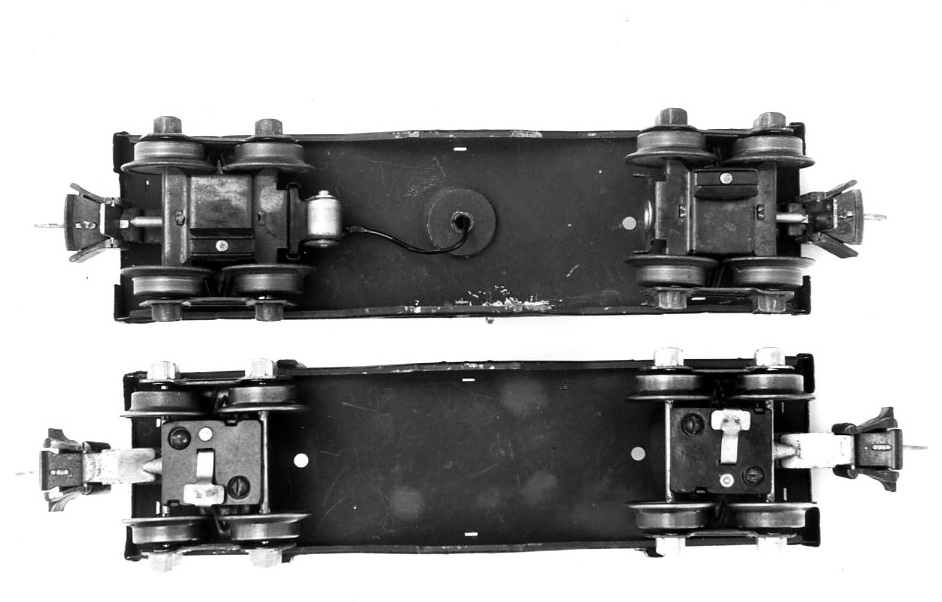We enjoy operations on our Weona (we-own-a) Railroad, but we wanted something different for our operating sessions. Here’s how we do it.
I made a pair of four-sided dice, one with sides labeled 1, 2, 3, and 4, and the other 1, 2, 3, and blank, giving a possible outcome of 1 to 7, to select the seven classes of freight cars. The results of this toss decides the makeup of our way-freight, as follows: 1 = flatcar; 2 = tank car; 3 = reefer; 4 = boxcar; 5 = gondola; 6 = hopper; and 7 = stock car. Four is the most frequent result of a toss, while a 1 or a 7 is less frequent.

The illustration above shows how I made two dies with just four saw cuts. I use 1″ square basswood, birch, or spruce stock, which can be cut with a razor saw. The first cut is made at an angle of 30 degrees, clean through.The second, third, and fourth cuts are made initially three-quarters of the way through so you’ll have some stock to hold onto. The second cut is made so that the diagonal and base leg are the same length.

In our operating sessions, we toss the dice to make up a six-car train for route switching. There’s a limit to how many cars are in the freight yard, so if the dice calls for a fourth tank car, and there are only three, we skip it and roll again.

For car forwarding from train to industries, we use Alan Wright’s “Tiddlywinks”-type chips drawn randomly from a hat. There’s one chip for each car, which is placed alongside the industry where the corresponding car is to be set out. These chips list car type, reporting mark, and the last four digits of the car number (for example, RS SFRD 2287). Chips are stored in a plastic container, ready to be drawn by chance when a train is going out on the road to do some route switching.
I hope you give our way of operations a try. It’s fun and different every time!













